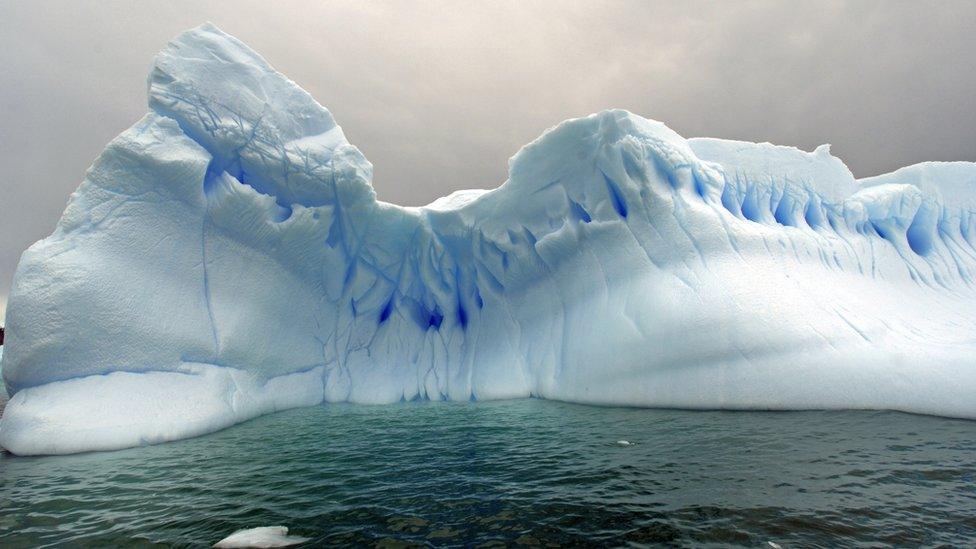Sea ice: Why is it so important?
- Published
- comments

Sea ice is different to icebergs, as icebergs are created on land, while sea ice forms on the surface of the water
In the Arctic Ocean there's a thing called the Arctic ice pack.
It's basically all of the ice that covers the entire Arctic Ocean.
It usually goes through a seasonal cycle where it melts in spring and summer when it's hotter, reaching its lowest around mid-September, then gets bigger again during autumn and winter, when it's colder - so it changes with the temperatures.
But a new study, by the Snow & Ice National Data Centre in Colorado, America, has shown that the Arctic Ocean has never had so little ice at this time of year.
Even though you will only find sea ice in the polar regions, it can have an effect on the climate in other parts of the world
That's because the water surrounding it is too hot and the ice isn't being able to form at its usual speed.
Usually in March, the Arctic ice pack is at its biggest.
But this year ranks as the 7th lowest maximum extent since the satellite record began in 1978.
Mark Serreze, director of the National Snow and Ice Data Centre, said "volume keeps going down," and that there needs to be more effort to monitor the situation.
Why is sea ice so important?
Polar bears rely on sea ice to hunt for food
Lots of animals rely on the ice in the Arctic Ocean to hunt for their food, like polar bears.
Seals and walruses also use sea ice for resting and giving birth.
Ice can also have an affect on the climate.
The ice is very bright and reflects the sun's light back into space, meaning that polar regions with sea ice stay cooler.
When there is less sea ice, not as much sunlight is reflected back into space, so temperatures in the polar regions rise.
These warmer temperatures mean more melting, which means less sea ice - and the cycle continues, having a warming affect on the area.
- Published20 July 2020
- Published2 January 2020
